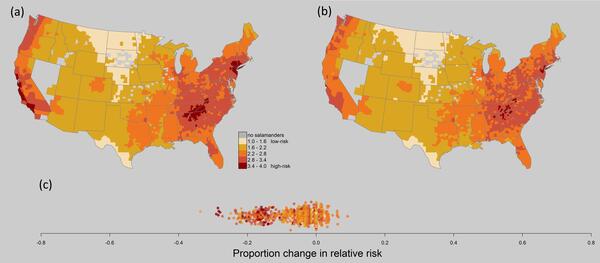Landsat 8 visible and thermal infrared images of Yellowstone
Landsat 8 visible and thermal infrared images of YellowstoneVisible and thermal infrared images of Yellowstone acquired on July 17, 2021. In the visible image, Landsat 8 channels 4-3-2 are assigned red-green-blue colors (respectively) to simulate natural color. In thermal infrared image, bright pixels are warmer, and dark pixels are cooler. The full satellite images are clipped to the boundaries of Yellowst






















